Lenovo IdeaPad Flex 5 Chromebook Review
A Chromebook with some surprisingly high-end specs
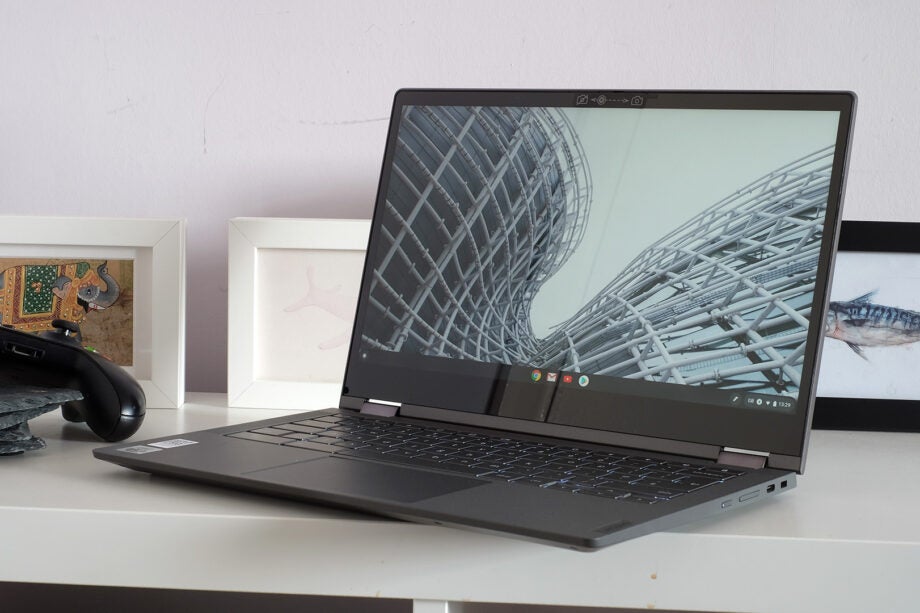

Verdict
A classy Chromebook for those after an affordable computer that does not look or feel cheap.
Pros
- Pleasant screen
- Comfortable, quiet keyboard
- Long battery life
Cons
- Value of high-spec models is questionable
- Plastic touchpad
- Weak speaker
Key Specifications
- Review Price: £529.99
- 13.3in 1920 x 1080 LCD screen
- Intel Core i5-10210U
- 8GB RAM
- 128GB storage
- Chrome OS
- Weight: 1.34kg
The Lenovo IdeaPad Flex 5 Chromebook is a computer for people who occasionally find themselves wanting to scream at their laptop, asking why it won’t do what they want it to.
This is a Chromebook, a simple laptop only capable of a thin slice of the things a Windows computer can handle. But that slice covers 100% of what many people need. As part of the bargain, you get a touchscreen laptop with battery life, build and display quality better than almost any Windows alternative near the price.
The best spec of Lenovo IdeaPad Flex 5 to buy would be a lower-power one than that reviewed here. This laptop has an Intel Core i5 CPU and 8GB RAM, but Chrome OS isn’t great at handling the demanding apps available to it, so you might as well get the Core i3 version.
That Lenovo IdeaPad Flex 5 is not available in all countries, though, currently stated as “coming soon” for the UK. The base version with a Core i3 and 4GB RAM costs $409 in the US, which is already a fair amount to pay for a Chromebook.
Related: Best Chromebook 2020
Lenovo IdeaPad Flex 5 Chromebook Design
The Lenovo IdeaPad Flex 5 Chromebook is a classy laptop, and makes the most of conventional build. It’s all-grey, and made using a mix of plastic and aluminium. It’s just as portable as many slim and light Windows laptops, weighing a dainty 1.34kg.
Its lid is low-key anodised aluminium, not desperate to show it is metal. The upper and lower body plates are plastic, but have a lovely soft-touch coating. The Lenovo IdeaPad Flex 5’s keyboard surround reminds me of the Dell XPS 13, which is very high praise.

While there’s nothing conspicuously “expensive” here, the Lenovo IdeaPad Flex 5 looks and feels accomplished. It does not immediately seem a budget laptop. There are some signs, of course, including fairly large blank borders around the flat glass display. A large black block below the screen is the kind of motif you’d hope not to see in, for example, a £1000 laptop in 2020.
There’s minimal flex to the keyboard plate, even under significant finger pressure, and as the name suggests this is a hybrid design. You can push the Lenovo IdeaPad Flex 5’s screen all the way back so it sits on the on the keyboard part.
This flexi freedom lets you set up the Lenovo IdeaPad Flex 5 in a “tent” position, or sitting on its keyboard. There’s only one drawback. Like most 360-degree hybrids there’s a little wobble to the hinge. Use the Lenovo IdeaPad Flex 5 on your knees in front of a window and the bouncing around of the screen reflections may become distracting. That said, the hinge will stay in place at any angle without sagging.
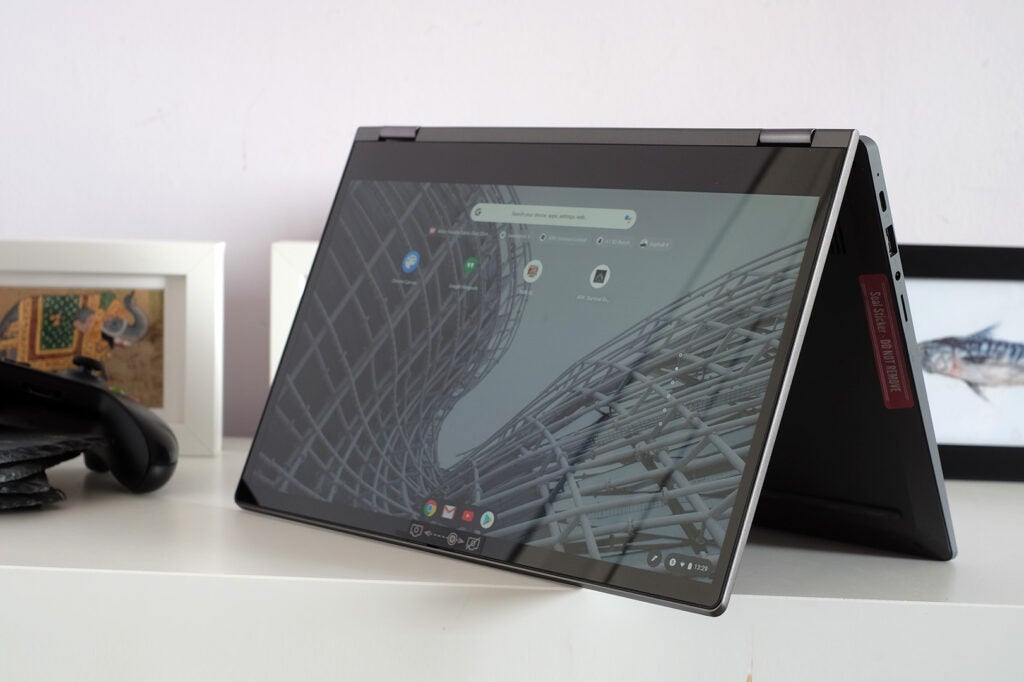
The IdeaPad Flex 5 uses a USB-C port to charge, and the charger brick is fairly small, if you’re concerned about portability.
Other connections include a second USB-C, a classic full-size USB-A, a microSD card slot and headphone jack. There’s a camera too, but it’s a fairly poor 720p sensor. It does have a lens-blocking slider, though, for those concerned about privacy.
Lenovo IdeaPad Flex 5 Chromebook Keyboard
The Lenovo IdeaPad Flex 5 has a solid keyboard and touchpad. Key feel is the highlight with 1.4mm key travel, a non-hollow feel and combination of fast and good actuation feedback make this keyboard just as good as that of pricey laptops. This isn’t a high resistance, “meaty” keyboard, but your fingers will fly over it.
I prefer the Lenovo IdeaPad Flex 5’s keyboard to that of plenty of far more expensive Windows laptops, and most MacBooks. It is perhaps the key to why it comes across such a quality laptop.
Its backlight offers more control than most too. You press “alt” and the screen brightness buttons to cycle through five brightness levels. Much of the light bleeds around the sides of the key caps, but this is to be expected of a laptop that does not have per-key lighting
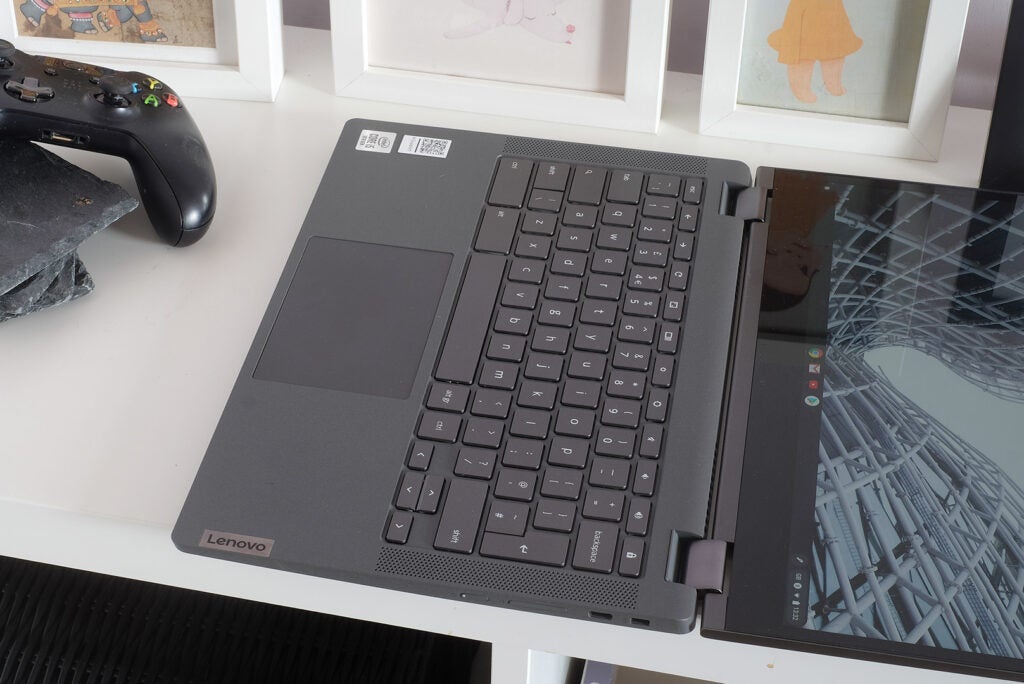
The Lenovo IdeaPad Flex 5’s touchpad is less impressive, but does the job just fine. It has a mylar (plastic) surface, not the glass used in high-end laptops.
While a finger glide is less creaky here than on plenty of budget plastic touchpads, you do not get the same smooth feel as textured glass. The pad is also a little too sensitive, and tends to recognise normal swipe mouse interactions as clicks. Turn off “tap to click” in Chrome OS’s settings to fix this problem.
Still, there’s no annoying pre-click pad wobble, the clicker does not require excessive pressure and the mechanism is dampened slightly to avoid a cheap click feel and sound.
A great keyboard and good-for-the-money touchpad make the Lenovo IdeaPad Flex 5 a joy to work on.
Related: Best Laptop 2020
Lenovo IdeaPad Flex 5 Chromebook Screen
The Lenovo IdeaPad Flex 5’s screen has the right characteristics to give off that impression of quality, without any of the truly high-end parts that might raise the price. It’s a 13.3-inch Full HD LCD, a touchscreen topped by a pane of glass that extends to the corners: no dated raised surround here.
Maximum brightness is a respectable 350 nits, which is above the average for laptops these days. It looks well-saturated, but this is not a wide colour gamut display. To expect one in a moderately affordable Chromebook is unrealistic.

Further comparisons with a bunch of higher-end laptops only revealed one clear shortcoming. The Lenovo IdeaPad Flex 5’s screen has slower pixel response than a high-end display, resulting in slight trails and motion blur in fast-moving, high-contrast objects. This isn’t noticeable with normal use, though. It’s not as if anyone will buy this Chromebook for competitive gaming.
The screen supports Lenovo’s styluses too, but our Lenovo IdeaPad Flex 5 didn’t include one.
Lenovo IdeaPad Flex 5 Chromebook Performance
This particular configuration of the Lenovo IdeaPad Flex 5 is one of the more powerful Chromebooks. It has a 10th generation Intel Core i5-10210U processor, 8GB RAM and a 128GB SSD.
The SSD reads at 677MB/s, not that fast for solid state storage but easily enough for ChromeOS. And the jump from 4GB of RAM, seen in lower-end Chromebooks, to 8GB is welcome. More RAM means you can, for example, open more browser tabs and run more apps concurrently without seeing performance issues.
An Intel Core i5-10210U is a great processor for a Windows laptop, but there’s an argument it is not worth the extra money over a Core i3 or Pentium/Celeron CPU in a Chromebook. Why? Chromebooks run Android apps, but they do not run the more demanding ones particularly well, even with an Intel Core i5.
Some apps and games won’t run at all. Some won’t display properly on the Lenovo IdeaPad Flex 5. Others may seem to run properly, but won’t perform as well as you might hope.

For example, Gameloft racer Asphalt 9 plays at lower frame rates, with more obvious laggy dips, than the best £200 phones. None of the visuals beyond the menu appear in Ark: Survival Evolved because Chromebooks do not support Vulkan graphics. I tried running N64 classic Goldeneye on an emulator and, while playable, there were regular frame rate dips worse than what you’d see in a Windows laptop with this kind of power.
Many apps will load in portrait, as if there’s a little phone app running inside your laptop. Most can then be resized to fill the Lenovo IdeaPad Flex 5 screen (after re-loading), but it’s a reminder Android apps aren’t entirely at home on Chromebooks.
The only version of Minecraft easily available for Chromebooks at present is Minecraft: Education Edition, which will only run when you’re signed into a school account. There are ways to get Minecraft on here, but not technophobe-friendly ones. Fortnite will not play on the Lenovo IdeaPad Flex 5 at all either because it does not support Chrome OS
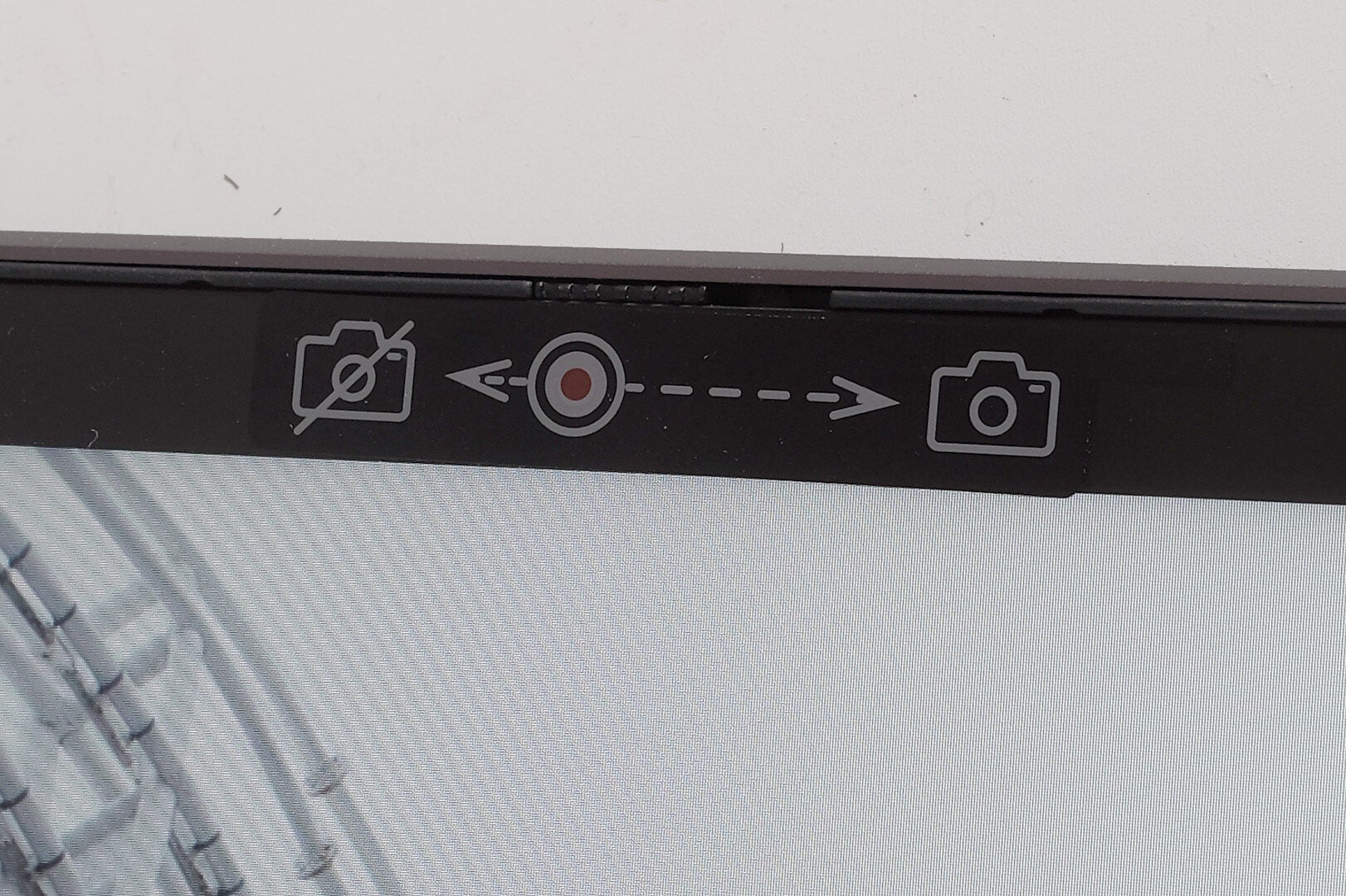
You can have fun on this laptop, plenty of it, but make sure it will do what you want because Minecraft and Fortnite are still two of most-wanted Android games. This is a laptop best kept to productivity and web browsing.
The Lenovo IdeaPad Flex 5 speakers are disappointing too. There are drivers to the left and right of the keyboard, placed for a good stereo image. However, they have zero bass and the mids sound thin and boxy rather than rich.
Tasks the Lenovo IdeaPad Flex 5 does handle well are things like basic office work, the kind of image editing you might do your phone, web browsing and Netflix streaming. Well, as long as you don’t mind the thin speaker sound.
Related: Lenovo Chromebook Duet review
Lenovo IdeaPad Flex 5 Chromebook Battery life
What you can do with a Chromebook is a little limited (if nowhere near as limited as it once was) but you usually get longer battery life as part of the bargain.
Lenovo says the IdeaPad Flex 5’s battery lasts up to 10 hours. Low-strain jobs see it last a good deal longer.
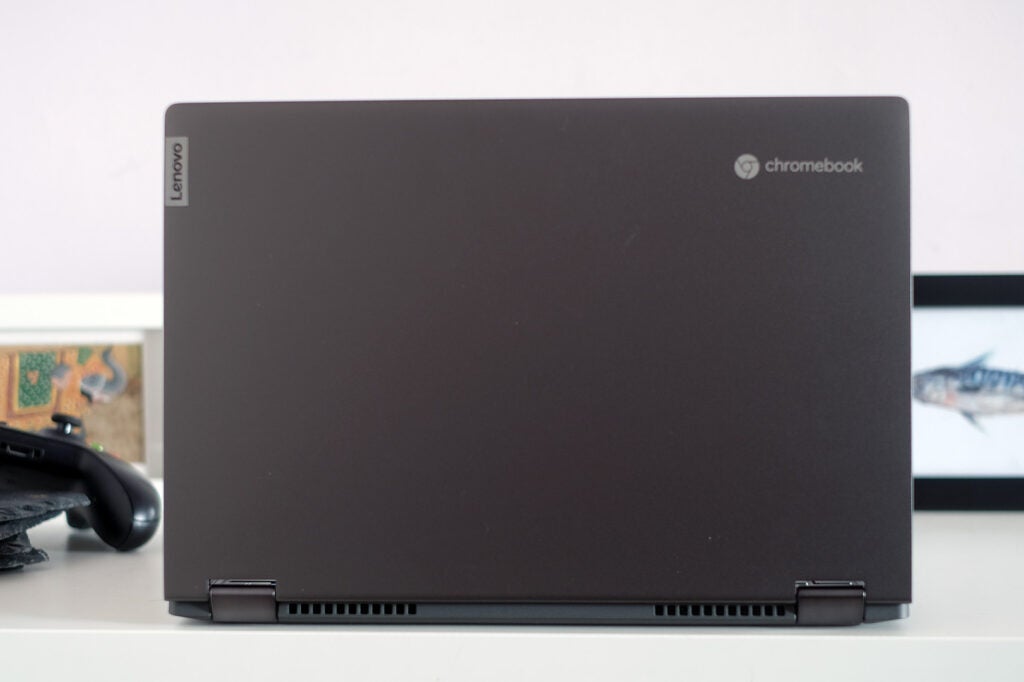
It lasts 12 hours and 45 minutes of YouTube streaming over Wi-Fi at 150 nit brightness. If your job largely involves writing up documents and sending emails, it should sail through a full day’s work. Just go easy on the browser tabs to avoid too much battery drain.
This is much longer than you’d see from a similarly-specced Windows laptop with the same battery capacity.
Should you buy the IdeaPad Flex 5?
The Lenovo IdeaPad Flex 5 is a model Chromebook in some respects. It has a comfortable keyboard, a solid screen, decent built quality and a classy, grown-up appearance. Battery life is excellent too.
Its speakers are fairly poor, though, and value is questionable if you go for the higher-spec model reviewed here, especially with the likes of the Surface Laptop Go recently entering a similar price territory.
Chromebooks shine as low-cost computers for people who just need to do the basics, and the benefits of a relatively powerful processor like an Intel Core i5 just aren’t as obvious as they are in a Windows laptop.


